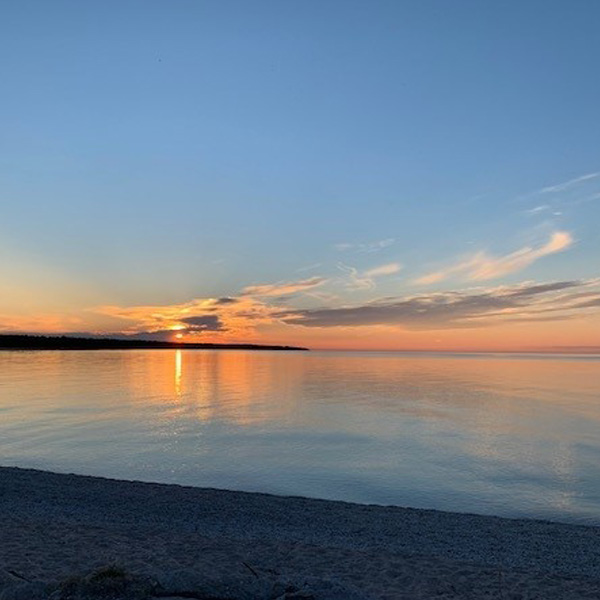Words of Wellness: Silence
September 6, 2022 - Sabrina Ford, PhD

“…and the solace found in it.” Those words were written by Dr. Claudia Finkelstein when I suggested the topic for this month. Here we are nearing the end of summer, fall is fast approaching with the frenetic organizing and reorganizing required in an academic setting. Hopefully, this summer you have taken time to relax, be still, and quiet the mind. Have we truly taken the time to rest, to relax, and to be silent? Have we found the time to capture that true solace that allows us to regenerate and recuperate? Have you been soaking up sunbeams that metabolize Vitamin D and rejuvenate our energy levels? There is still time to find the stillness and quietness that is a necessary practice of the art of well-being.
Sitting at the edge of the water quietly, mindfully. Smelling the salt of the ocean or the freshness of a lake. Rolling your toes in the sand with limbs outstretched to capture all of the blessings that the universe has to offer. Do you hear the gulls calling, the waves swooshing, the water’s spray hit your face? This is my go to visualization when I need a quick get away from the day’s business and activity. I channel this blissful mindfulness, intentionally, virtually taking in the smells, sounds, and sights. However, we can practice our intentional silence anywhere.
Sabre Cherkowski and her co-authors have written about the practice of meditation—particularly for educators. Mainly, attention-based (also known as mindfulness-based meditation) mindfulness-based meditation emphasizes “acknowledging the knowing of moment-to-moment experiences while focusing the attention on an object or a physical sensation (e.g., breathing), any distracting thoughts/sensation to be experienced rather than suppressed.” Meditation practice, no matter how short, is extremely useful for reducing stress and anxiety while enhancing mental and physical well-being.
Mindfulness sessions, short or long, have been shown to reduce depressive symptoms, stress, and anxiety, and increase inner calmness and vitality (Creswell, 2017). During the day I often take 2-3 minutes to be still, to be silent – sitting at a stop light, waiting for a meeting to start, standing in the grocery store line. It’s easy because you have the tools, all you need is your brain and the will. Of course, there are longer sessions that can be more intensive in quieting the mind. Sitting still and clearing the residuals of a hectic moment offers much solace that can heal the brain, and where the brain goes, the mind will follow.
Soon the soothing sounds of waves moving across the lake will give way to brisk air and a colorful palette of changing leaves. With fall comes the busy machinations of teaching and mentoring, meetings and paperwork. Somehow the stressors seem to increase as the days get shorter, the air gets colder, and the urge to hibernate takes hold. Use your handy tools to be still. There is peace and healing in silence, stillness, and solace.
Remember to attend our mindfulness sessions each Monday, Wednesday and Friday from 9 – 9:15 a.m.
 Sabrina Ford, PhD
Sabrina Ford, PhD
Associate Professor
Institute for Health Policy and Obstetrics, Gynecology & Reproductive Biology
Mobile: 610.357.7659
sford@msu.edu
Photo by Cynthia Vincent

